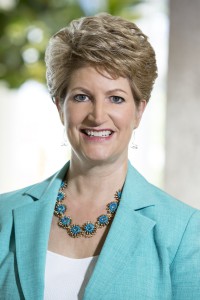
In this article published in the June 17, 2018 issue of Managed Healthcare Executive,
Sutter Health Plus Vice President of Marketing and Communications Monica Majors shares insight on understanding generational motivators and how to communicate benefit plans.
In the United States, five generations make up the nation’s current workforce. Stark differences define the three largest groups: Baby Boomers, Generation X, and Millennials. Each generation possesses unique communication styles and preferences, inspiring an important question.
How can employers engage a multi-generational workforce in their healthcare benefits?
By adopting a marketer’s approach, HR professionals and employers can implement effective tactics that keep employees aware of their health plan options and how to select the plan that best fits their needs.
Understanding Generational Motivators
As one generation is planning for retirement, another is joining the workforce with a different perspective on the value of health plan benefits. Speaking to multiple generations requires a multi-faceted approach. To build a benefits marketing plan that crosses the workforce’s generational lines, business leaders must understand how their employees access healthcare and consume information about healthcare benefits.
Each generation has its own unique motivators and makes healthcare decisions differently. And while most consumers are generally familiar with technology, not everyone considers it their primary information source. A successful health plan marketing strategy speaks to each generation in their preferred medium, tone, and format.
Baby Boomers (born in 1946 to 1964). Compared to younger consumers, Boomers possess more expendable income and less tech-fluency. That said, they don’t appreciate convenience any less. According to the Pew Research Center, 79 percent of people age 50 to 65 years go online every day.
For members of this generation, the most ideal primary care provider’s office would house many of the services they need at one location and wouldn’t require patients to travel between various sites for X-rays, lab draws, or other routine exams. Boomers, many of whom are parents and grandparents, as well as employees, value their time and money.
Baby Boomers prioritize word-of-mouth recommendations to influence where, and from whom, they seek healthcare. This group may be more brand-faithful than younger generations and may extend brand loyalty in return for quality care and coverage. The members of this group generally tend to place a high value on reputation, especially for health plan or provider names they trust. A recent Journal of the American Medical Association study found that Baby Boomers are the most likely age group to use online physician rating services.
Generation X (born in 1965 to 1980). This age bracket typically shops for healthcare the same way they shop for retail goods and services—they bring an active, discerning attitude. A 2017 Kantar Health study measuring how consumers make healthcare decisions found Gen Xers used more information sources than Boomers and Millennials when making decisions.
Many consumers among the Generation X population appreciate convenient access to healthcare. To meet this demand, savvy providers now operate clinics that offer routine services––immunizations, treatment for minor injuries and illnesses, and wellness screenings—after hours and over the weekend, with no appointment necessary. For busy Generation X parents, these new walk-in retail clinics are a welcome sight.
Older members of this generation are beginning to seek procedures such as preventive mammograms and colonoscopies. Employers should personalize their offerings to Gen Xers with this detail in mind, in addition to marketing these features in health plan offerings.
Millennials (born in 1981 to 1996). When it comes to information, Millennials generally expect ease and accessibility. They value clear comparisons among health plans. Also known as Generation Y, Millennials are often emotionally driven. They use personal relationships to determine brand loyalty. A negative experience is likely to inspire a switch to a new provider or carrier.
Employers should highlight as many benefits and features offered by health plans as possible to Millennials. Millennials appreciate online tools such as portals to manage benefits or mobile apps to enroll in wellness programs, as well as doctors who provide both video visits and office visits. The bigger a health plan’s presence is on social media, the better. A recent Elite Daily study found 62% of Millennials are more loyal to brands that engage directly with consumers on social media.
Millennials are less likely to seek care than older generations. Many will accept lower monthly premiums in exchange for higher-cost shares. Therefore, high-deductible health plans (HDHPs) compatible with health savings accounts (HSAs) are an attractive benefit choice for Millennials. When given a choice of health plans, Millennials are most likely to enroll in an HDHP, according to a 2017 survey conducted by Benefitfocus.
Navigating employee benefits can be an overwhelming and confusing experience for consumers, regardless of their age. Employers should provide real-world examples to illustrate the complexities of benefit plan designs. Brokers and health plans can offer helpful materials upon request, such as collateral that clarifies the details about HDHPs, out-of-pocket maximums, and family deductibles. The key is providing this information in various forms––handouts, in-person events, online tutorials, emails, and newsletters—reaching each audience where they are.
Every consumer is different. The one constant that transcends all generations is the demand for quality care, with convenience, access, and transparent pricing. By tailoring educational materials to the motivators and communication preferences of each generation, your business will create a better engaged and informed workforce.

